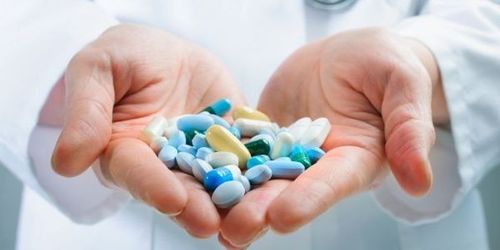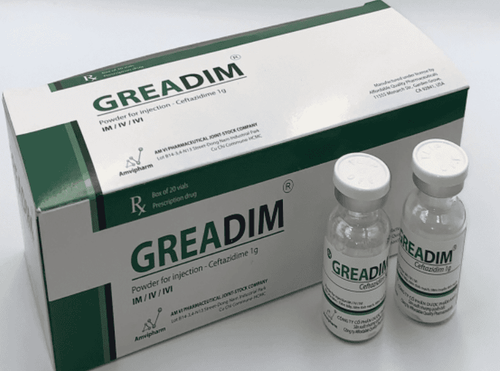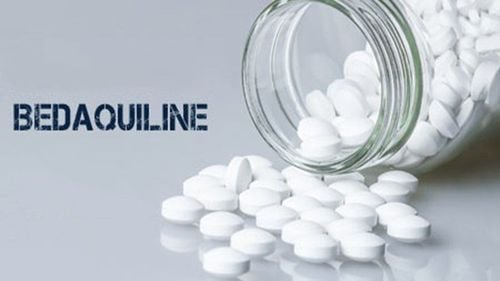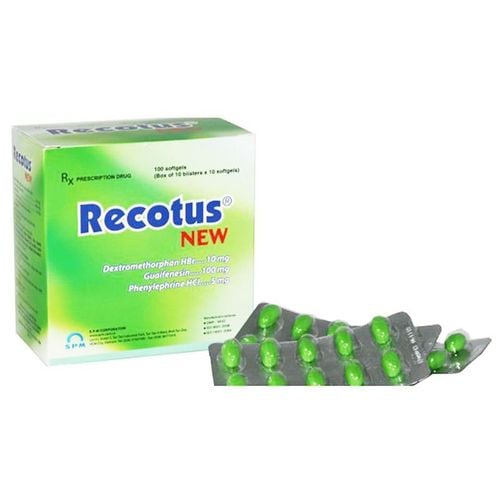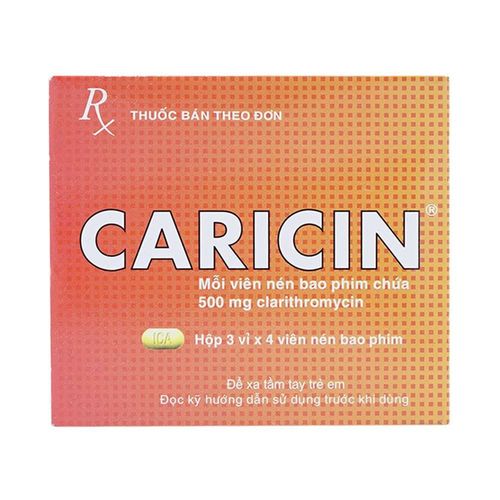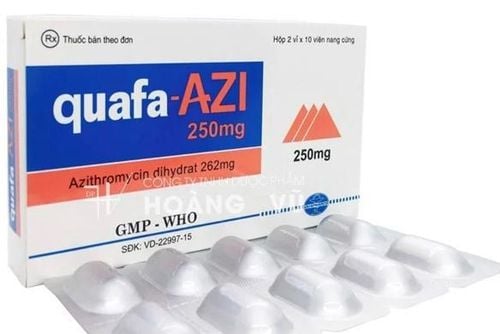This is an automatically translated article.
The main ingredient of Aradine is Kanamycin, an antibiotic for parenteral use, for the treatment of moderate to severe infections caused by bacteria sensitive to the antibiotic Kanamycin. So how should Aradine be taken?1. What does aradine do?
The drug part of Aradine is Kanamycin (in the form of Kanamycin sulphate) 1g, prepared in powder form for injection.
Kanamycin is an aminoglycoside antibiotic with bactericidal action. Bactericidal by inhibiting protein synthesis of susceptible bacteria by irreversibly binding to the 30S ribosomal subunit.
In general, aminoglycosides have antibacterial spectrum mainly against Gram-negative bacteria and are only effective on some aerobic Gram-positive such as Acinetobacter, Citrobacter, Enterobacter, Escherichia coli, Klebsiella, Proteus with and without indole, Providencia, Pseudomonas, Salmonella, Serratia and Shigella. Aminoglycoside antibiotics are not effective against streptococci and most Enterococcus strains are resistant.
2. Indications and contraindications of Aradine
Indications: Aradine can be used for a short period of time to treat severe infections caused by susceptible strains of bacteria such as Proteus, Enterobacter aerogenes, Klebsiella pneumoniae, Serratia marcescens and Mima Herella, Mycobacterium tuberculosis, Pseudomonas aeruginosa, Haemophilus influenzae, Streptococcus pneumoniae as in disease:
Cases such as bacterial infection in the biliary tract; Bone and joint infections; Central nervous system infections; Abdominal infections; Pneumonia . Skin and soft tissue infections, urinary tract Pulmonary and extrapulmonary tuberculosis when other less toxic antibiotics cannot be used due to resistance or contraindications. Kanamycin can be used in combination with penicillin or cephalosporin antibiotics if needed in the treatment of some serious infections of unknown etiology, but should be avoided when hearing and kidneys are impaired. Contraindications of Aradine:
Patients with a history of hypersensitivity to kanamycin antibiotics or other ingredients. When there is a toxic reaction with other aminoglycosides such as streptomycin, gentamicin, fradiomycin, bacitracin or with any other ingredient of the drug. The drug is not indicated in long-term therapy, because of the danger of toxicity on the ears and kidneys.
3. Dosage and usage of Aradine
3.1 Administration The drug is intended to be administered intravenously or intramuscularly. The drug is administered to you by a qualified healthcare professional.
3.2 Dosage Adults:
Intramuscular: The usual dose is about 15 mg/kg per day, divided into 2 to 4 times. The maximum dose is 1.5g/day. Treatment with the antibiotic kanamycin should be limited to the short term, typically 7 to 10 days.
Chronic infections: Use 3g/week (1g/day, use every other day) or 1g x 2 times/day, use 2 days/week. The total dose should not exceed 50 g. Single doses up to 2 g intramuscularly have been used in the treatment of ocular gonococcal infections in the absence of other therapeutic agents. Intravenous infusion: The dose should not exceed 15 mg/kg/day, the solution for intravenous use is prepared by adding a 1000 mg vial to 200-400 ml of sterile solvent. The appropriate dose is administered over a period of 30 - 60 minutes. The total daily dose should be divided into 2-3 doses.
Children
Severe, acute infections: Can use 15 mg/kg/day divided into 2-4 times, not more than 6 days. For the prevention of neonatal disease caused by a mother's gonococcal infection or for the treatment of neonatal conjunctivitis, a single intramuscular dose of 25 mg/kg, up to a maximum of 75 mg/kg in the absence of other therapeutic agents. . Elderly: Reduce dose and use with caution.
Renal impairment: Adjust dose based on creatinine clearance. The doses below can be used as a reference, but should be used with caution, it may be necessary to carefully titrate the dose.
Creatinine clearance from 50 - 80 ml/min: Use 60 - 90% of the usual dose. Creatinine clearance 10 - 50 ml/min: use 30 - 70% of the usual dose. Creatinine clearance < 10 ml/min: Use 20-30% of the usual dose. 3.3 Overdose Overdose can cause symptoms mainly neuromuscular block reaction causing dyspnea, respiratory failure should be detected and treated promptly.
Kanamycin can be removed from the blood by hemodialysis or peritoneal dialysis. Newborns may need a blood transfusion. There is no specific treatment, but mainly symptomatic and supportive treatment.
4. Side effects of the drug Aradine
When taking Aradine, you may experience the following side effects:
Common: Irreversible ototoxicity, nephrotoxicity (uncommon at low doses below 15 mg/kg/day and when used). short duration of treatment; possibly up to 50% risk or more if total dose is up to 30 g). Uncommon side effects: Hypersensitivity reactions such as itching, skin erythema, swelling; decreased vitamin K (due to a decrease in blood prothrombin) causing bleeding; reduce vitamin B1, causing neuritis, stomatitis. When taking the drug you may experience other side effects, when side effects occur, you need to notify your doctor for advice and treatment if necessary.
5. What should be noted when using Aradine?
Aradine is strong against gram-negative bacteria, but has high toxicity and risk of side effects. Therefore, it is usually used only in severe cases and other antibiotics do not respond.
Renal function can change significantly during kanamycin administration, so it is necessary to check renal function daily or more often. But in elderly patients taking the antibiotic kanamycin there may be a decrease in renal function that is not evident in the results of routine screening tests such as urea or serum creatinine. Measurement of creatinine clearance may then be more useful.
Because kanamycin is excreted mainly in the urine with high concentrations, so before and during administration the patient should be adequately hydrated to avoid irritation of the renal tubules.
Use with caution in patients with hearing loss due to previous use of streptomycin. If you have any symptoms of hearing loss or tinnitus, you should immediately notify your healthcare provider.
For pregnant women: Aminoglycoside antibiotics cross the placenta and can harm the unborn baby. Therefore, kanamycin should not be used during pregnancy.
Note when using with breastfeeding women: Should avoid using kanamycin for nursing mothers because the drug can cause damage to the 8th nerve in the infant, because kanamycin is excreted in milk. It was found that after 1g intramuscular injection, the peak concentration of kanamycin in milk was about 18.4 mg/l. Because of the potential for serious adverse reactions in a nursing infant, caution should be exercised and a decision should be made between whether or not to discontinue nursing.
Notes for use when driving and operating machinery: Be careful when driving or operating machinery because this drug can cause dizziness, tinnitus, loss of balance affecting machine operation.
6. Aradine drug interactions
Avoid combining the antibiotic kanamycin with diuretics such as furosemide, as this may increase nephrotoxicity.
Hearing and nephrotoxicity is increased if kanamycin is used concurrently or sequentially with other nephrotoxic, neurotoxic and ototoxic drugs such as other aminoglycoside antibiotics, acyclovir, amphotericin B, bacitracin, capreomycin, cisplatin , methoxyflurane, polymycin B, vancomycin. Therefore, the concomitant use of these drugs should be avoided.
The toxicity of kanamycin causing neuromuscular blockade (dyspnea and respiratory depression) is increased when used concurrently with muscle relaxants, anesthetics such as succinylcholine, rocuronium, tubocurarin.
Kanamycin reduces endogenous vitamin K production, so the dose of oral anticoagulants must be changed if kanamycin is used concomitantly and need to be monitored for signs of bleeding.
Aradine antibiotic is prescribed by a doctor. Due to its high toxicity, drug use should be monitored and used only in severe infections. If any problems arise during the course of taking the drug, you should immediately notify your doctor for advice and treatment.
Please dial HOTLINE for more information or register for an appointment HERE. Download MyVinmec app to make appointments faster and to manage your bookings easily.




